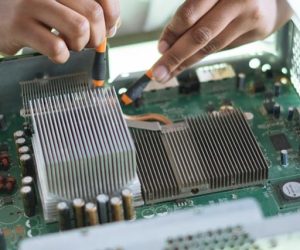Traveling through the neighborhood, have you noticed how a few homes stand out proudly, with newly installed roofs that glisten in the sun? On the other hand, one house appears to be struggling with a decrepit roof that looks more like a patchwork than anything else.
The truth is many signs indicate when it’s time for homeowners to invest in a new roof before major damage occurs and repairs become costly. Therefore, this article will take a look at some of the most common telltale signs that you need to consider adding a new roof to your home.
Absence of roof granules in the gutters
Although gutters can easily be taken for granted, they play an important role in protecting the integrity of your home. One warning sign that something is wrong with your guttering system is if you start to see a noticeable absence of the small roof granules on your gutter guards and inside of your gutters.
This could indicate that either the roofing material wasn’t installed quite right or that it has begun to wear away more quickly than expected.
Caulking is cracking or missing from roof seams and valleys
It’s worth taking the time to inspect the seams around hips, ridges, rakes, chimneys, valleys — any area where two sections of roofing material meet — to make sure everything is in order. By checking and replenishing any cracked or missing caulking, you can prevent water damage, dry rot, and other problems with a long-term impact on your home’s durability and safety.
Caulk also helps protect your roof from potential leaks caused by small gaps near nails or screws in flat spots on the roof too. Sometimes patching holes in flashing or replacing shingles isn’t enough. According to Tech Roofing, if certain areas of your roof are looking a bit neglected, you’ll want to check for caulking that’s either cracked or missing entirely. In some cases, professional repair or replacement might be needed, but you should definitely find out how long does it take to replace a roof.
Shingles are curling, buckling, blistering, or lifting
Things like buckling, blistering, curling, or lifting of the shingles can be indicative of either an aging roof that needs to be replaced or wind damage that should also be tended to promptly. Not addressing these problems can cause serious issues in terms of water leakage into your home, water damage and potentially getting mold.
Flashing is cracked or damaged around chimneys, dormers, and vents
Cracks and other damage to the flashing around chimneys, dormers, and vents can allow water to seep into walls or other hard-to-reach places, wreaking havoc on foundations and siding over time.
If you see any evidence of cracking or crumbling, catch it right away with some basic caulking or by replacing the damaged strips of metal before things get worse.
Moss and algae growth on shingles
Lichen and moss can occur due to a variety of factors including moisture, debris buildup, shade, gutters, and ventilation. Left unchecked, these can cause damage to the integrity of your roof and decrease the lifespan of your shingles.
Fortunately, there are ways to prevent this from happening, such as removing debris from the roof regularly, installing solar reflective shingles that have been treated with an algaecide, and zinc strips near the ridge of the roof, so runoff will disperse over a larger area.
Rotting wood decking near skylights and ventilation systems
Rotted wood decks near skylights and ventilation systems are not something to ignore; they can lead to significant structural damage and risk to your home if you don’t take care of them immediately.
Having a thorough inspection done periodically by a professional contractor is one way to avoid these issues, as they will be able to detect any potential risks right off the bat.
The age of the roof
The age of your roof should always be taken into account when thinking about upkeep. An older roof can create problems down the line, so it’s important to assess its condition and determine whether it needs to be replaced or repaired.
If you’re a homeowner who thinks their roof may be on its last legs, consult a professional for an opinion and remember that getting ahead of potential problems now will save you time and money in the long run. It’s all about being proactive; don’t wait for something to go wrong before addressing the issue — better safe than sorry!
You must take the time to inspect your roof regularly as this will help ensure its longevity and prevent any further damage or costly repairs. The seven most common causes of unavoidable damage to roofs should be at the top of your list when it comes to inspections.
Keep an eye out for any absence of granules in the gutters, cracking or missing caulk from seams and valleys, buckling, curling, blistering, or lifting shingles, cracked or damaged flashing around chimneys, dormers, and vents, moss and algae growth on shingles and rotting wood decking near skylights and ventilation systems.
Taking these precautions now can save you money and nerves in the long run!



